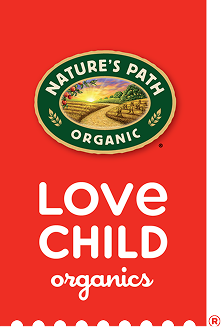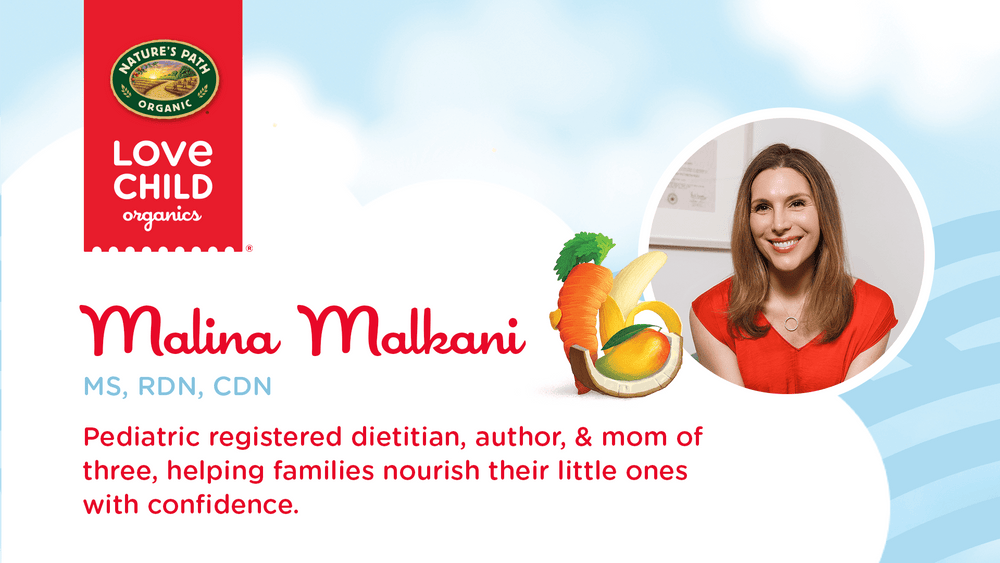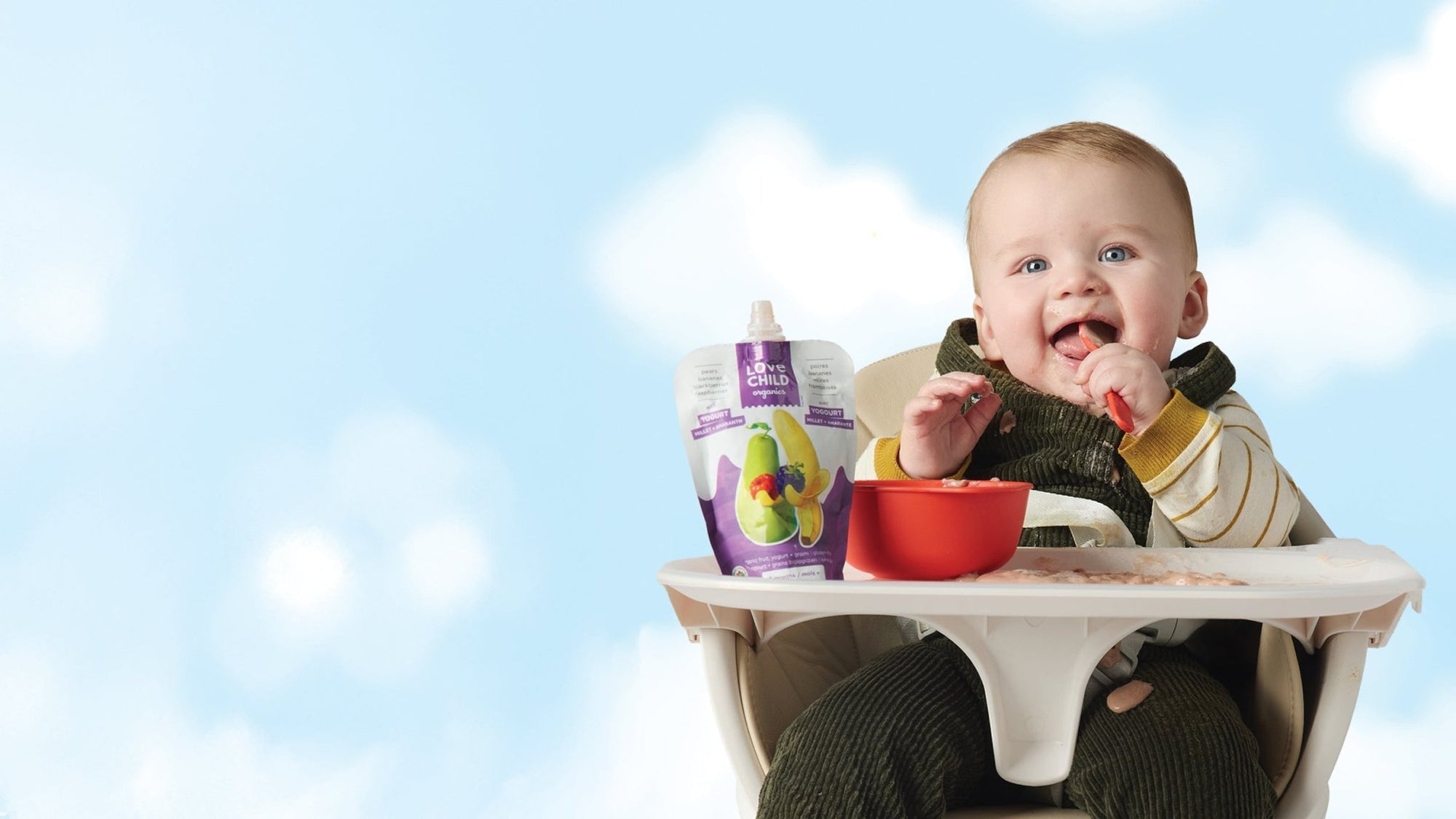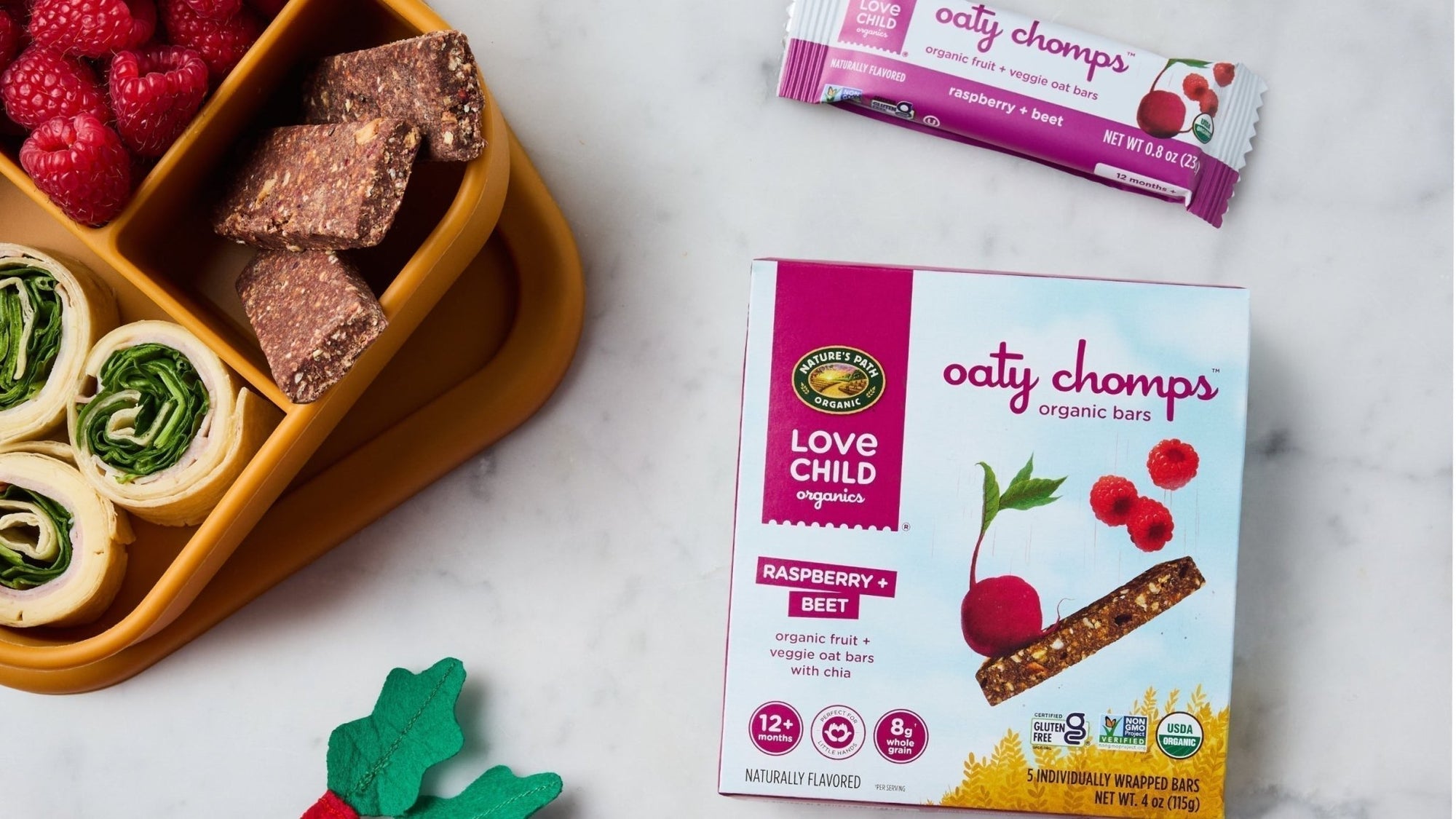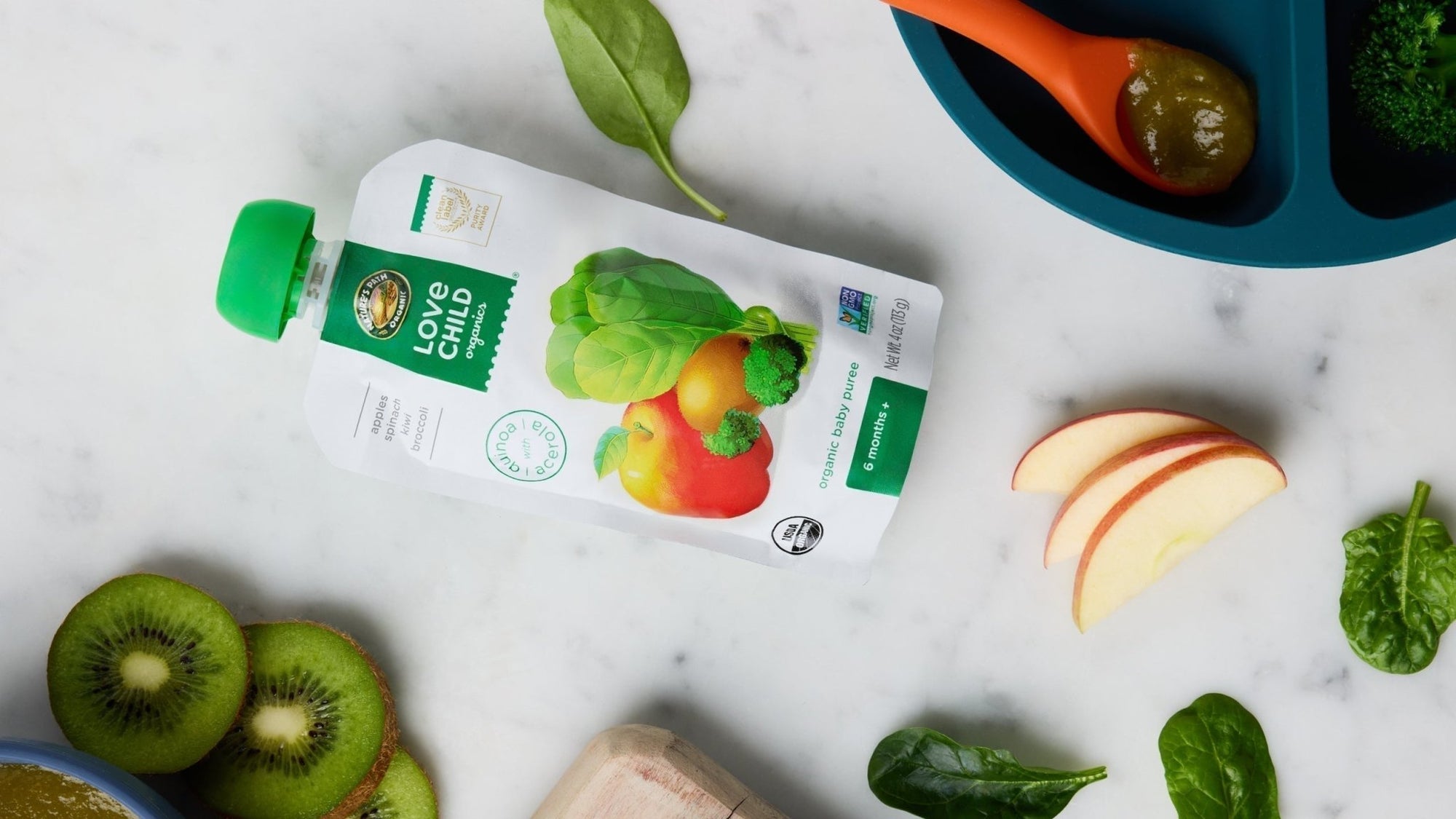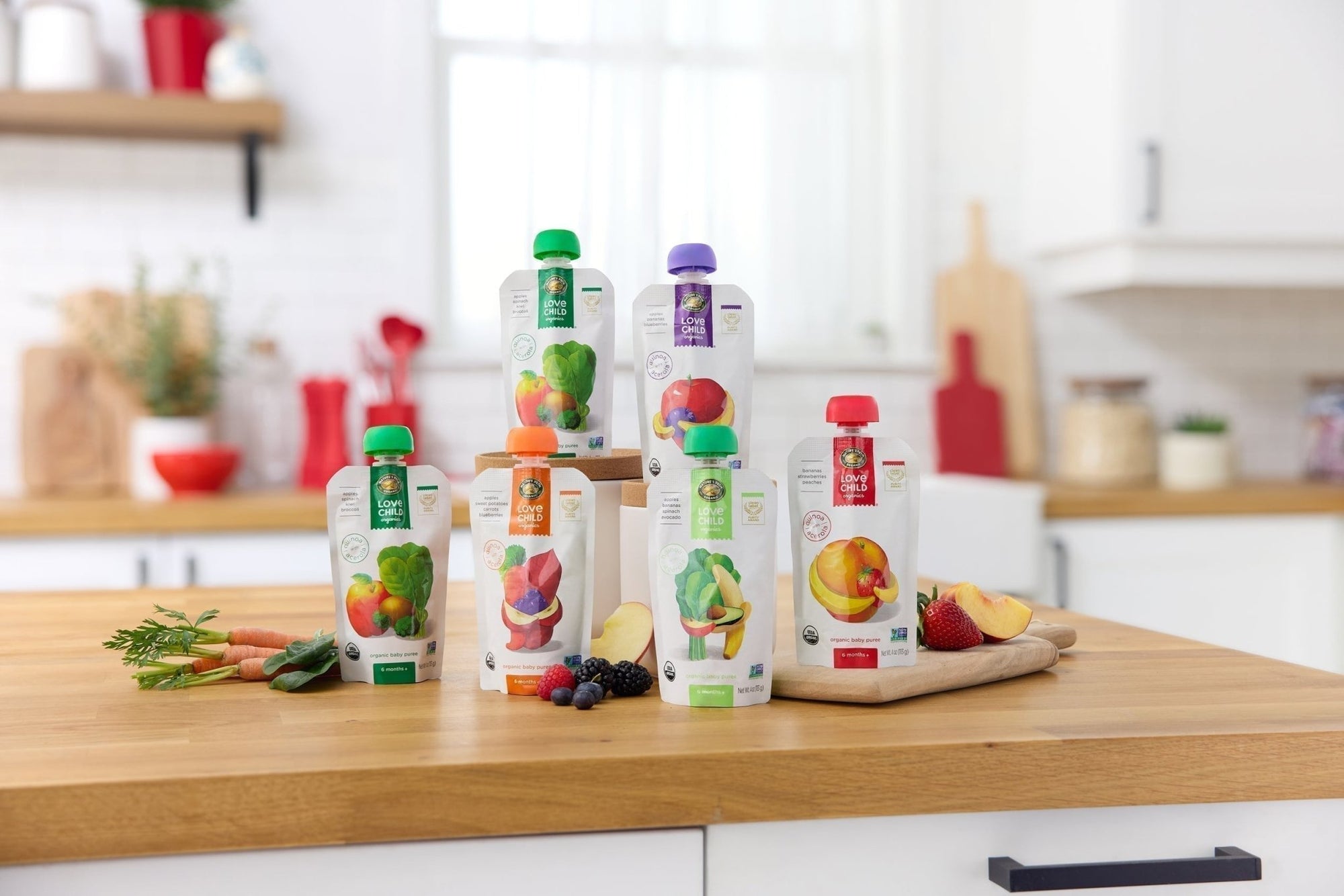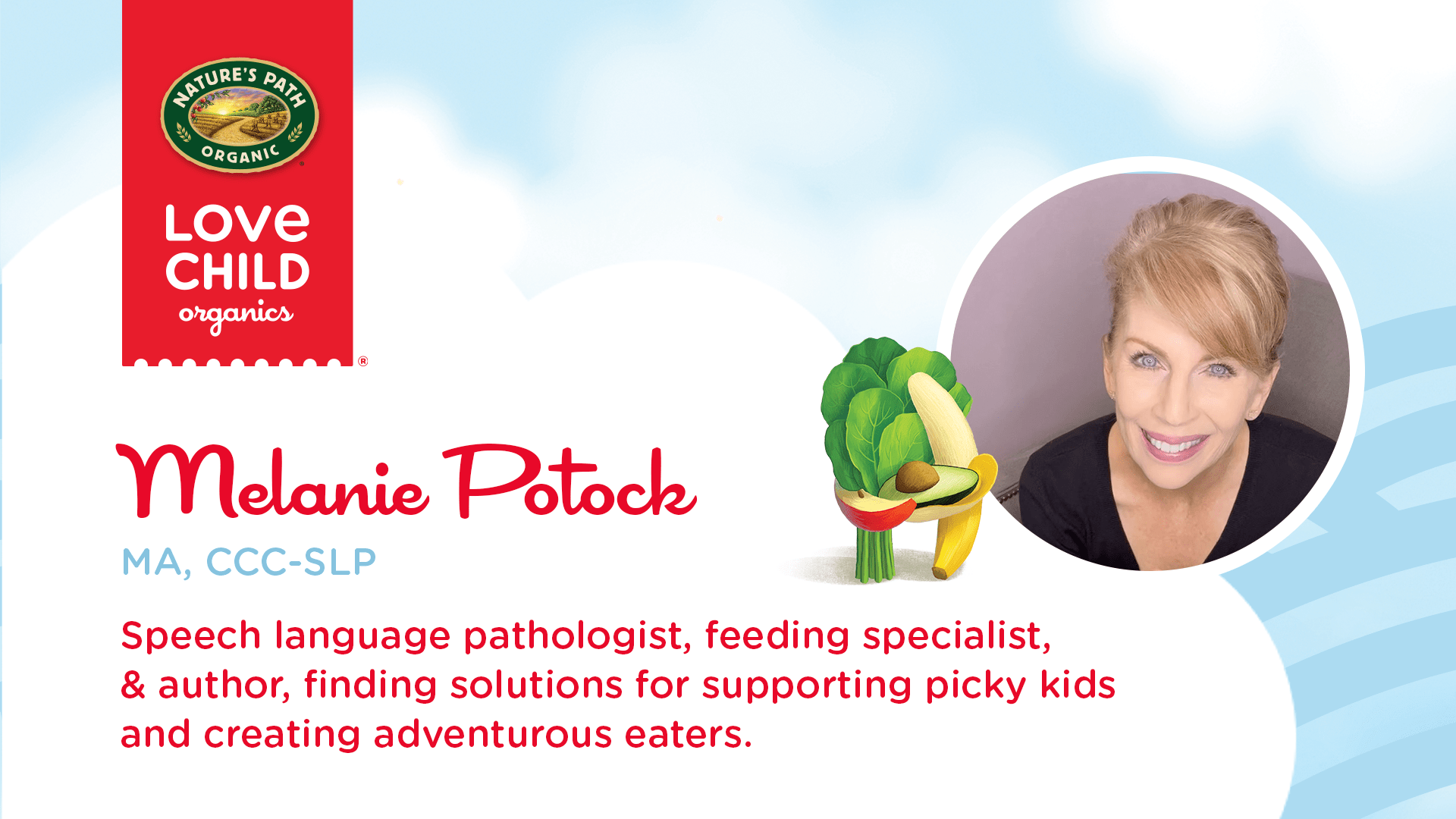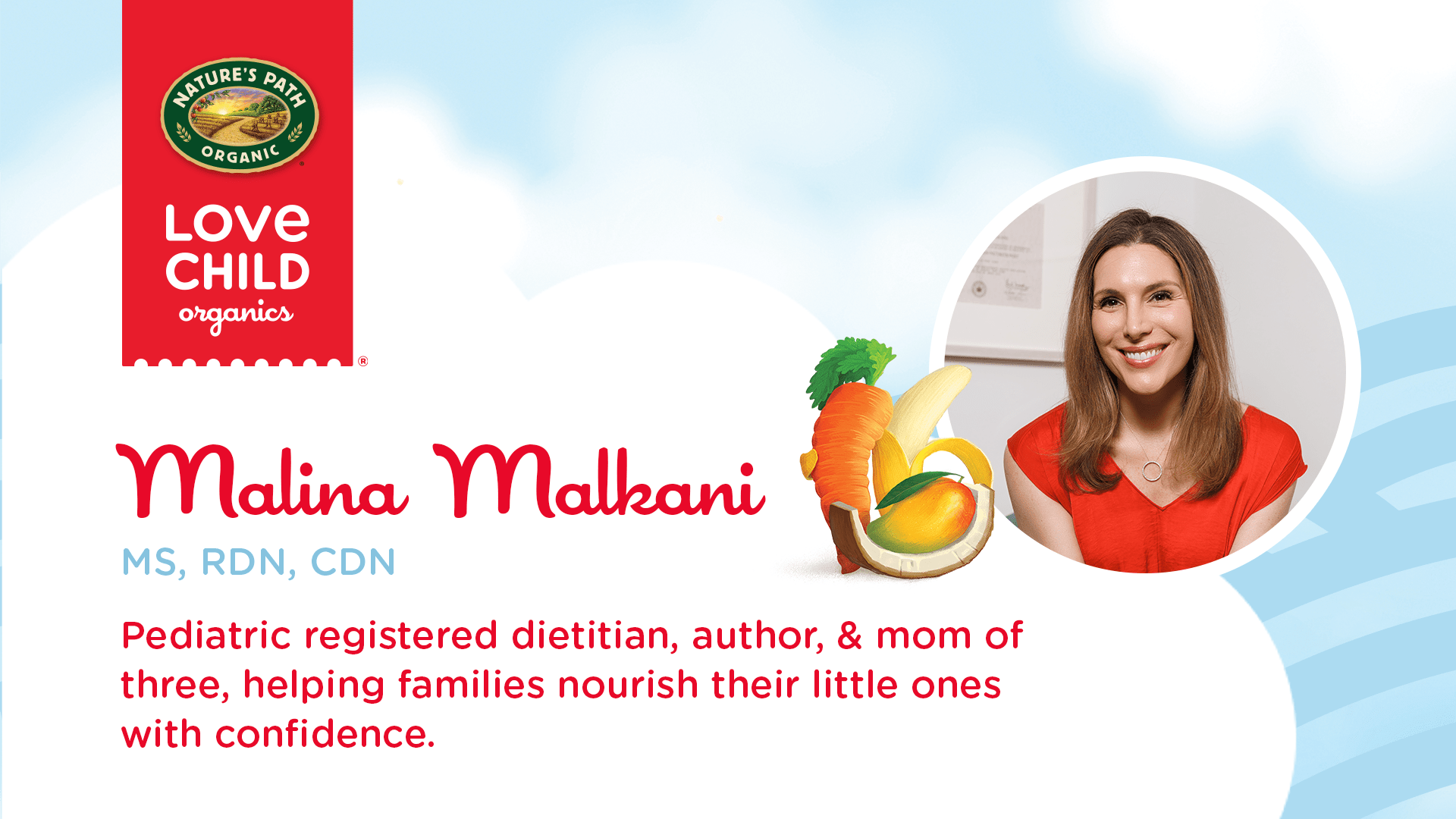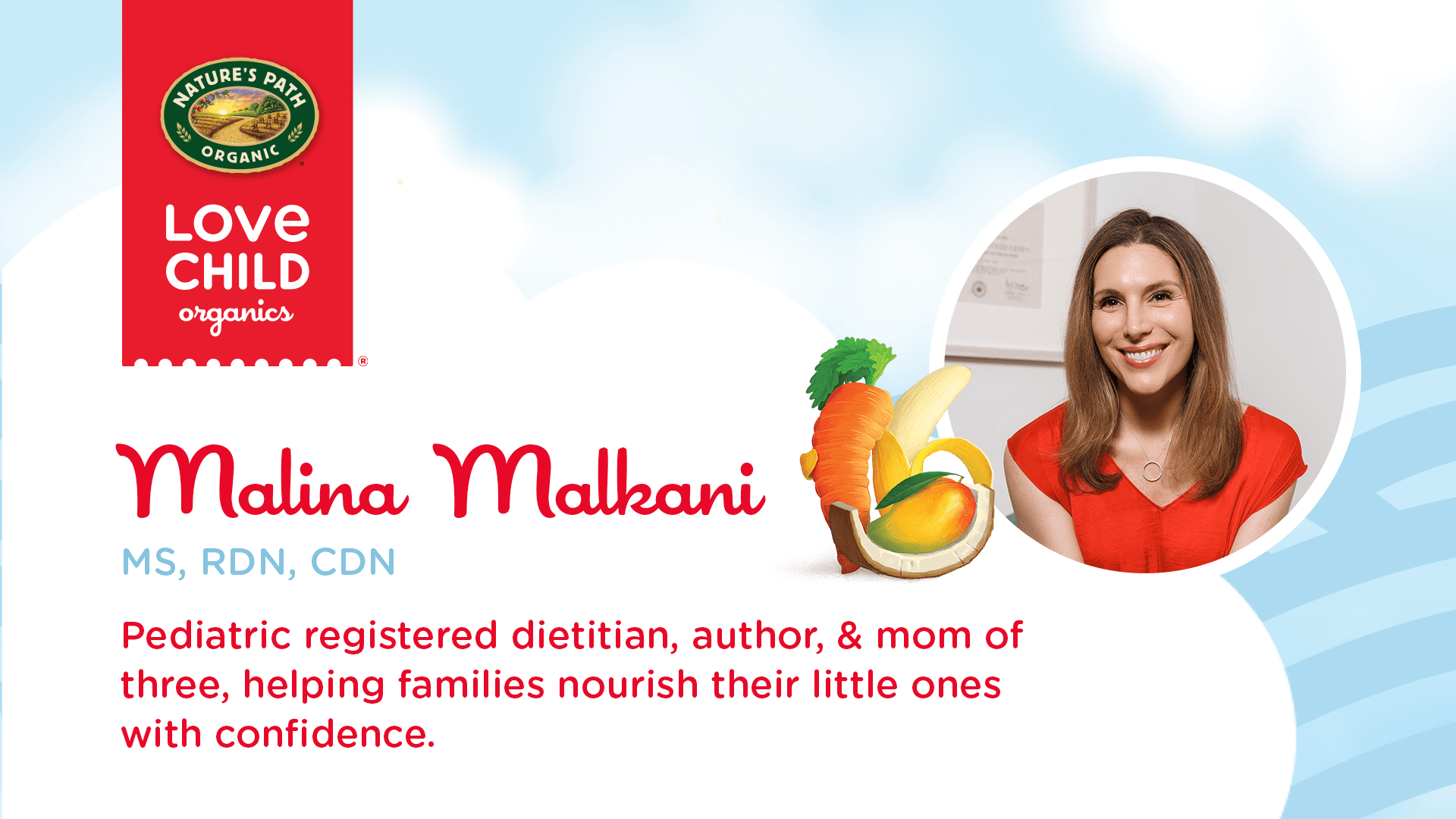
Feeding with Love and Confidence: Expert Tips from Malina Malkani, MS, RDN, CDN
Hi! I’m Malina Malkani, the pediatric registered dietitian, author, mom of three behind @healthy.mom.heathy.kids, and a passionate advocate for helping families nourish their little ones with confidence.
As a longtime admirer of Love Child Organics’ commitment to providing wholesome, organic foods for babies and toddlers, I’m thrilled to join the Love Child team and share insights and practical tips from my journey and food philosophy to help make feeding your little ones easier and less stressful.
How I Found My Calling in Pediatric Nutrition
Nutrition is actually my second career. Before becoming a registered dietitian, I spent a decade in the performing arts, where I felt a great deal of industry pressure to maintain a certain weight. I fell into the cycle of restrictive diets and unhealthy food habits, but through trial, research, and experience, I eventually discovered how balanced, nourishing foods made me feel strong and energized. That realization changed my life—and, ultimately, my career.
My passion for pediatric nutrition was born when I became a mom. My three daughters all arrived within 3 ½ years of each other, and I quickly found myself navigating many challenges, including breastfeeding difficulties, multiple c-sections, prematurity, food allergies, severe reflux, picky eating, and more.
Even with a background in nutrition, feeding my own babies felt very overwhelming at times, and I wasn’t finding resources that provided research-backed, practical solutions.
Experiencing firsthand how stressful feeding can be is what inspired me to specialize in infant, toddler, and child nutrition, which has been my area of focus for over a decade now.
Why I Love Love Child Organics
As a child feeding expert, I’m always on the hunt for brands that prioritize real ingredients, transparency, and balanced nutrition. Love Child Organics understands what parents need—high-quality, organic foods that are both convenient and nutrient-dense.
Some of my favorite Love Child products include:
-
Superblends Apples, Spinach, Kiwi + Broccoli Puree – A veggie-packed, no-added-sugar option that helps familiarize babies with the flavor of vegetables.
-
Oaty Chomps Blueberry + Carrot Snack Bar – Filled with 2g of fiber per bar, ample iron, and plenty of nutrient-rich chia seeds, this is one of my favorite, go-to toddler snacks.
-
Sea Friends Arrowroot Vanilla Cookies – A delicious toddler treat made with real veggies and packed with nutrients from organic spinach, broccoli, apple, and sweet potato.
My Food Parenting Philosophy
When it comes to feeding babies and toddlers, the how of feeding is just as important as the what! Family mealtime dynamics and how we talk about food help shape a child’s lifelong eating habits. With that in mind, here are some of the guiding principles behind my food parenting practices:
1. The Division of Responsibility
Ellyn Satter’s Division of Responsibility is a game-changer for reducing mealtime battles: parents decide what, when, and where food is served, while children decide how much and whether to eat. This approach builds trust and a positive relationship with food.
2. Encouraging Exploration Without Pressure
It takes an average of 15-20 exposures before a child accepts a new food! I encourage parents to offer a variety of foods without pressure, making mealtimes enjoyable and stress-free.
3. The Power of Dietary Variety
A diverse diet supports healthy growth and taste development. Offering a range of flavors and textures early on helps set the stage for a well-rounded palate.
4. Wholesome, Real Foods
While all foods can have a place in a child’s diet, it’s wise to prioritize as many nutrient-dense, minimally processed foods as you can to help make variety and balanced feeding more accessible.
5. Balance Over Perfection
That being said, some days will include home-cooked meals; other days, we can rely on high-quality, convenient foods, like the options from Love Child Organics. Nutrition is about consistency, not perfection.
Answers to Common Infant & Toddler Feeding Questions
Feeding babies and kids often comes with a lot of questions, and you’re not alone in wondering what’s best for your little one. Here are answers to some of the most common feeding concerns parents have, along with expert-backed tips to make mealtimes smoother and more enjoyable.
When Should I Start My Baby on Solid Foods?
For most babies, solids are best introduced at around 6 months of age (sometimes a little earlier, but not before 4 months), when they show signs of readiness: good head control, ability to sit with minimal support, interest in food, and the ability to bring objects to their mouth.
Do I Have to Choose Between Baby-Led Weaning and Purees?
Nope! A combined approach works well. Baby-led weaning (BLW) promotes self-feeding with finger foods, while purees provide an important texture experience. You can offer both, ensuring meals are baby-friendly and responsive to their cues.
What Are the Best First Foods for My Baby?
There’s no single “best” first food, but given how tiny a baby’s tummy is, we want to make every bite count! Nutrient-rich options include avocado and soft-cooked sweet potato, and iron-rich foods like iron-fortified infant oat cereal, and pureed beans or lentils.
Since around 20% of babies between 6-12 months of age are at risk for iron deficiency, try to offer iron-rich foods regularly to help support brain development and growth.
How Can I Encourage My Toddler to Try New Foods?
Picky eating is common during toddlerhood. Growth slows during this stage, and toddlers assert their independence—including at mealtime! A great way to encourage variety is through repeated exposure without pressure. Keep offering small portions of new foods alongside familiar favorites, and eat together as a family as often as you can, to model healthy eating habits.
How Do I Know if My Child Is Eating Enough?
Instead of stressing over each bite, focus on long-term trends. If your child is growing well, meeting milestones, filling diapers, eating foods from all of the food groups over the course of a week or so, and generally energetic, they’re likely getting enough nutrition.
Following the Division of Responsibility can also help take the pressure off—your job is to offer balanced meals at regular intervals, and your child’s job is to decide whether and how much to eat.
Feeding with Confidence
Feeding your little one doesn’t have to be stressful. By following your baby’s cues, offering a variety of foods, and creating a positive mealtime environment, you’re setting them up for a lifetime of healthy eating.
And remember, balance—not perfection—is key. Having high-quality, ready-to-go options like Love Child Organics can make feeding easier without sacrificing nutrition.
For more feeding tips and deeper dives into your questions about feeding and nutrition for little ones, check out my blog. We’re in this together—one delicious bite at a time.
AUTHOR BIO
Malina Malkani, MS, RDN, CDN, is a pediatric registered dietitian, best-selling author, national speaker, and single mom of three behind the popular Instagram and TikTok handle @healthy.mom.healthy.kids, which reaches a combined audience of over 150,000 followers. A trusted expert media in infant and childhood nutrition, her expertise has been featured in hundreds of media outlets including Good Morning, America, and parents appreciate the relatable, practical guidance found in her online courses, and her top-ranked blog, named one of the Best Pediatric Dietitian Blogs by FeedSpot. Malina is the author of Simple and Safe Baby-Led Weaning and Safe and Simple Food Allergy Prevention (BenBella Books, 2024), and the creator of Safe & Simple Baby-Led Feeding and Solve Picky Eating. A Forbes Health Advisory Board Member and advisor to the RWJF Reframing Child Health project, Malina holds two undergraduate degrees from Northwestern and a master’s in clinical nutrition from NYU. She mentors dietetic interns and runs a thriving nutrition consulting company and private practice.
